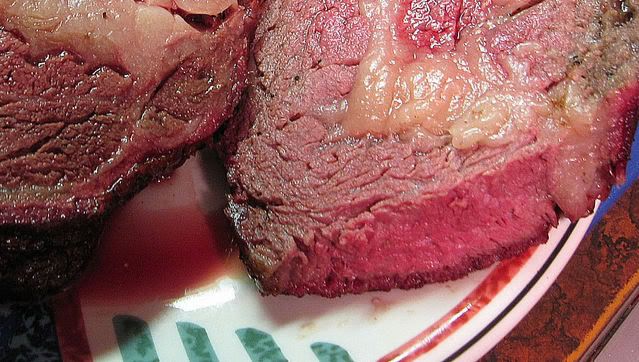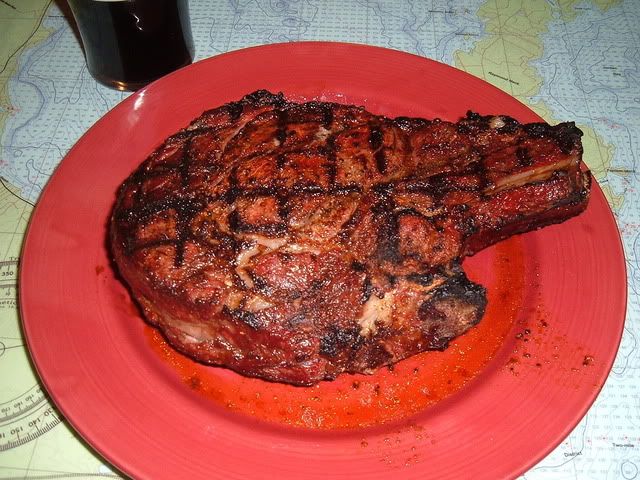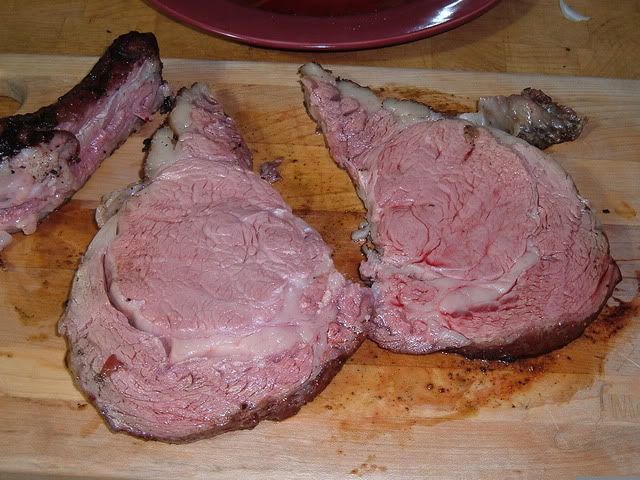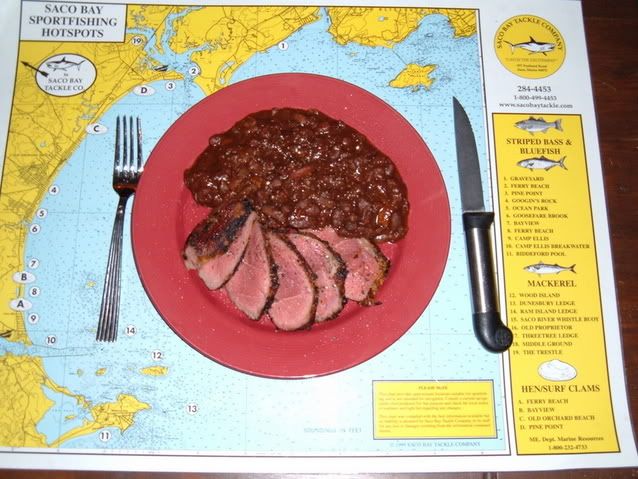Welcome to the EGGhead Forum - a great place to visit and packed with tips and EGGspert advice! You can also join the conversation and get more information and amazing kamado recipes by following Big Green Egg to Experience our World of Flavor™ at:
Want to see how the EGG is made? Click to Watch
Facebook | Twitter | Instagram | Pinterest | Youtube | Vimeo
Share your photos by tagging us and using the hashtag #BigGreenEgg.
Share your photos by tagging us and using the hashtag #BigGreenEgg.
Want to see how the EGG is made? Click to Watch
Sear or Reverse Sear
ACB
Posts: 7
Does any one have a preference regarding Searing or Reverse Searing? I am doing a Standing Rib Roast. I tried the sear first method last week and it turned out great. However, I worried about my fire going out while letting the egg cool from 500 to 325. Please share with me your experiences, pros/cons of each method. Do I take the platesetter out while searing??? Thank you for all of your advice in advance.
Comments
-
Well, your fire will not go out while the cooker is ramping down, and sometimes the ramp down can happen in 15 or 20 minutes. It's hard to tell the differences in color and flavor between the two methods. There is some food science information regarding moisture retention and the Maillard reaction which favors the end sear, but the differences are slight.
I've done them both ways and I favor barbecue temps and the end sear simply because I think I have more control over the total cook. Cooking with lower pit temps allows me more time as well as the flexibility to bump the pit temp up or down to match my sit down time. I also turn them a couple of times to balance the color out. I usually start off around 225°, and usually don't go higher than 275°. I also get a little smoke ring when cooked slow and I don't think I have ever gotten one when I roast them. Of course, this is no big deal other than bragging at the table :laugh: .
It's so easy to ramp up for the end sear, or I have also done them in a 500° degree oven if I have the Egg tied up with veggies or something. and yes, I take the plate setter out for the end sear.Happy Trails~thirdeye~Barbecue is not rocket surgery -
Oh man....we need to make a rule about posting food pic's an hour before lunch. :ohmy: Or I need to quit browsing prior to lunch. :silly: That's cooked perfect for me.LBGE Katy (Houston) TX
-
I think you have alittle bit more control with the reverse sear and it takes less time to ramp up than it takes to cool down.
FireWalker -
On the roast's and Tri-Tips I always sear on the end of the cook. My big reason is if things in the kitchen go longer or quests arrive late, I can stall my sear a little bit by letting it rest a bit longer and not over cook the roast, the other way, searing first, when the roast is done it's done and finished.
-
im going against the flow here, i like it seared first. i like the flavor of the sear after the juices comingle during the roasting stage. another reason is that ive done a few roasts that looked so drippy with fat that i think they would have dripped massively if i went for the later sear. and if you go with a high temp sear which really isnt the case with a prime rib, any pepper in the rub burns and i especially dont like that flavor. nope, i salt, sear, pepper/rub, roast.fukahwee maineyou can lead a fish to water but you can not make him drink it
-
During the roasting portion are the eggs setup for indirect cooking when doing a roast like this?
-
I cannot answer for every one, but I do set up indirect after the direct sear.
-
when they say searing with a big standing rib roast, it isnt really searing, its a high temp roast 500/550 thats really going on. ill cook them inderect, or direct depending on how fatty the roast is, the more fat i lean to an inderect cook. ill cook a 2 or 3 bone choice piece direct all the way if its not too fatty and a 2 bone piece ill really sear at 800 degrees and trex it like a steak. i dont make my mind up on how im going to cook it til i see it. this is a trexed 2 bone piece cooked direct. the last pic is a trexed boneless leg of lamb. i do prefer direct cooks when i can get away with it.


 fukahwee maineyou can lead a fish to water but you can not make him drink it
fukahwee maineyou can lead a fish to water but you can not make him drink it -
CI says low roast then sear. I do all thick cuts of beef that way. Most importantly, IMHO, is to dry out the meat prior to cooking (concentrates the flavors). Target is 3-7 days. (salt and place it on a cooling rack over a cookie sheet in the bottom of your fridge. Trim away any hard stuff before cooking.)
Last weekend I made 5 2" thick rib eyes (about 2 lbs each) using this method "dry aged" for about 6 days flavored w/ sea salt, cracked pepper, and smoke from oak barrel chunks used to mature Virginia Lightening whiskey. Crazy good. (only thing I'd change is to use 1.5" thick cuts).
Here's what CI says -
"It's cooked so gently and the temperature inside is very even, so you don't even have to let it rest before carving it. Perfectly cooked from edge to edge (i.e., no "gray zone"), and super-tender. The advantage of searing after low roasting is that the meat is already hot and dry when you sear. As a result, it browns much faster, leading to less overcooked meat in the interior. Another advantage is that there are enzymes present in beef that will slowly break down some of the tougher muscle fibers (one of the effects of dry-aging). These enzymes work faster and faster as they get warmer until they hit 122 degrees, when the enzymes become inactive. Starting in a cold oven without a sear makes sure that these enzymes are active for as long as possible, which tenderizes the meat.”
Categories
- All Categories
- 184K EggHead Forum
- 16.1K Forum List
- 461 EGGtoberfest
- 1.9K Forum Feedback
- 10.5K Off Topic
- 2.4K EGG Table Forum
- 1 Rules & Disclaimer
- 9.2K Cookbook
- 15 Valentines Day
- 118 Holiday Recipes
- 348 Appetizers
- 521 Baking
- 2.5K Beef
- 90 Desserts
- 167 Lamb
- 2.4K Pork
- 1.5K Poultry
- 33 Salads and Dressings
- 322 Sauces, Rubs, Marinades
- 548 Seafood
- 175 Sides
- 122 Soups, Stews, Chilis
- 40 Vegetarian
- 103 Vegetables
- 315 Health
- 293 Weight Loss Forum
